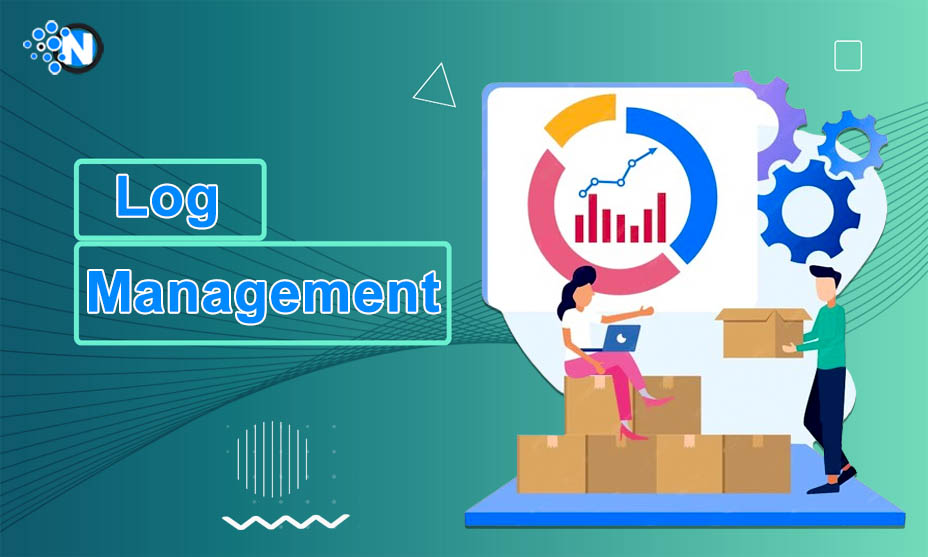Log Management – Everything You Need to Know

Log management is crucial in this modern world of Information Technology to maintain the health of systems and troubleshoot critical issues to ensure security. Over the years, technology has been developed and significantly improved, making it the most important part of any organization’s infrastructure to overcome challenges. By extracting data and storing it precisely, companies can pocket brilliant advantages and achieve success and the desired position in the market. In this guide, we have elaborated on the key aspects of log management along with the top strategies to carry out this activity. Also, some emerging trends are detailed, helping you learn about upcoming developments.
What is Log Management?
Log Management is a comprehensive procedure of collecting, storing, and analyzing the log data to extract useful information from it. In this way, businesses and organizations can streamline their activities to overcome marketing challenges. The log data is obtained through different systems, applications, and network devices, which is particularly beneficial for a specified company that generates it. Generally, logs are the records of events that happened inside a system. Understanding them is pivotal as it helps you to learn about system behavior and diagnose the problems. Ultimately, you will be able to meet compliance requirements, helping you and your business to survive through such a saturated marketplace and competition.
Importance of Log Management
In the under-section, we have elaborated on the importance of log management to help you learn why this activity is crucial for your enterprise.
1 – Security and Compliance
Logs are necessary to detect dangers and vulnerabilities. In this way, they help companies eliminate threats and ensure the integrity and confidentiality of the data to regulate with the security compliances.
2 – Troubleshooting
Logs also work as a valuable tool to diagnose the issues and resolve them. By analyzing the logs, IT teams can identify the main reason for the problems. Hence, they can work rightly to reduce the downtime.
3 – Performance Monitoring
Log data delivers insights into the system performance to help you follow the right practices for monitoring and optimization. Further, it provides an efficient IT infrastructure for more effective outcomes.
Components of Log Management
The following are the main components of log management. Understanding them is vital to carry out this process seamlessly and effectively.
1 – Log Sources
Numerous sources like applications, operating systems, network devices, security appliances, and databases generate logs. You must centralize them to streamline the further activities.
2 – Log Collection
Designated log collectors are there, which collect logs from several sources and centralize a repository. Sometimes, specialized agents transmit logs to a centralized server.
3 – Log Storage
Efficient storage of logs is mandatory as the data is available in large volumes. Log storage solutions must be scalable and easily accessible and provide security to ensure long-term advantages.
4 – Log Analysis
The next component of log management is analyzing. It involves extracting the desired information from raw data. You can use technologies like SIEM to identify patterns, anomalies, and other security threats.
5 – Alerting and Reporting
Lastly, alerting and reporting are the main procedures. Bringing automation into this step results in IT teams responding more actively to critical events. Further, it is important for documenting and communicating the generated insights.
Best Practices for Effective Log Management
Log management is a critical procedure requiring careful consideration of various important steps. Some of the best practices for effective management are explained below.
1 – Define Log Collection Policies
Firstly, establish clear policies to determine the logs to collect, their source, and retention time. Follow them perfectly to ensure security and compliance.
2 – Centralize Log Collection
Next, you have to centralize log collection to simplify the management procedure and enhance visibility. Moreover, you can leverage this management system for efficient results.
3 – Regular Log Review
Review the logs on a regular basis to identify potential issues and vulnerabilities proactively. As a result, you can create a more secure and stable IT environment.
4 – Implement Security Measures
Security measures are the foremost requirement. You must employ encryption techniques during data transmission and storage to maintain confidentiality.
5 – Use Automation for Alerts
Automation works on predefined principles. They help in timely responses to security incidents to reduce damage and downtime.
Emerging Trends in Log Management
The following are the emerging trends in log management. Integrating them will ease this process and save time and effort.
1 – Machine Learning and AI Integration
Machine learning algorithms and AI integration will result in enhanced log management, alongside detecting and responding to complex threats more effectively.
2 – Cloud-Native Log Management
The increasing adoption of cloud services has also alerted companies toward accommodating cloud-native architectures. It will bring scalability, flexibility, and accessibility.
3 – DevOps and Log Management
Following DevOps practices will provide insights into application performance and facilitate collaboration. Moreover, CI/CD pipelines ensure data generation and transmission without delay.
Challenges in Log Management
No matter how much development and technology integration there is, the below-mentioned challenges are always associated with this management.
1 – Volume and Velocity
The volume and velocity of log data are serious questions on storage techniques, processing, and analysis. Efficient log management systems are required to overcome this challenge.
2 – Data Quality and Standardization
Logs from different resources may lack standardization, making it difficult to stabilize the information. You must implement standard logging practices to extract meaningful data.
3 – Resource Intensiveness
Log management procedures could be resource-intensive, which impacts the overall system performance. That’s why you must balance the log collection to minimize the impacts as much as possible.
Final Verdicts
Log management is becoming an absolute requirement for businesses and enterprises. The rise in marketing competition has made it tremendously essential to manage the log data precisely and extract the required information out of it to maintain your position in the market. Otherwise, it could be more challenging to make your products and services resonate with the requirements of your audience. By following the right practices and leveraging the help of modern technologies, you can overcome the potential challenges in log management, which will take your company to an advanced level of success.




